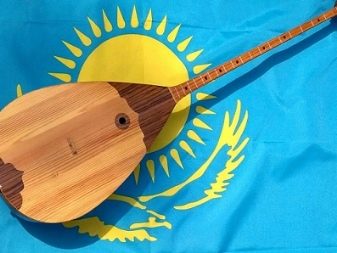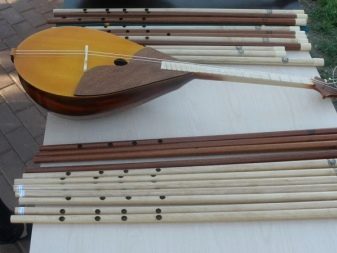All about the musical instrument dumbyra
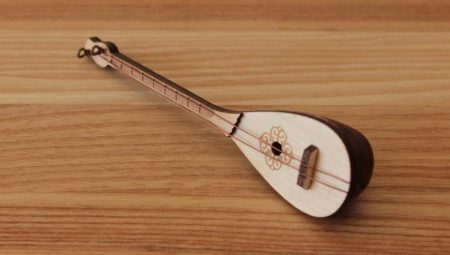
The Bashkir people have a unique cultural heritage, including music. For a long time, the ancient instrument dumbyra was used for chants. About him and will be discussed in our material.
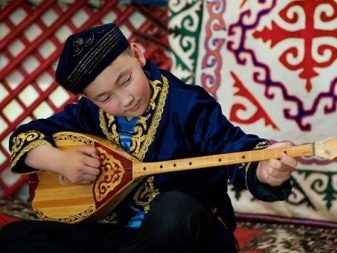
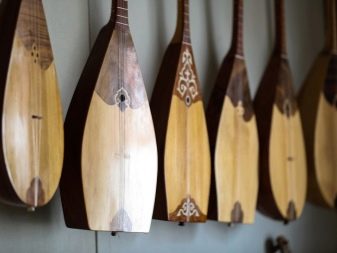
What it is?
Dumbyra is a folklore instrument that belongs to the string-plucked group. Uzbeks, Kazakhs and Tajiks have similar models. The Kazakhs have a two-stringed dombra. Not a single holiday will take place without the participation of dombra, which the Turkic peoples consider the property of the nation. Dombra has even been featured in the Guinness Book of Records.
The name of the instrument comes from the Arabic word "tanbur", which means "torment the heart". Folk singers and storytellers performed soulful ballads to the melodious sounds of dumbira, which touched the hearts of many people.
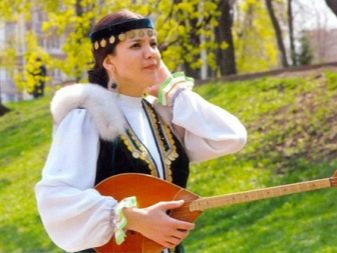
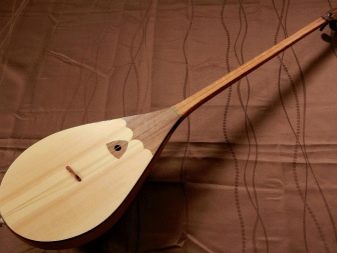
History
Dombra is about 4000 years old. This is confirmed by an ancient find kept in the Museum of Musical Instruments in Kazakhstan. Mentions of the Bashkir dombra are found in the common Turkic dastans "Kitabi dede Korkud", the epic "Zayatulyak menen khyuhylu" and "Korgut-ata". Playing the dumbyr is the oldest tradition of the Turks. During the chants, people were happy or sad, telling stories, inspiring each other.
The art of playing has been passed down from generation to generation. Young people are still happy to learn how to play this ancient instrument. Little information about the Bashkir dombra (dombra) is available in the Atlas of Musical Instruments of the Peoples of the USSR. Also, the writer D.N.Mamin-Sibiryak talked about her, noting the amazing similarity with the Russian balalaika. It is believed that this instrument was brought to Bashkiria from ancient Assyria. Dombra is a symbol of freedom and a sacred object among the Kazakhs.
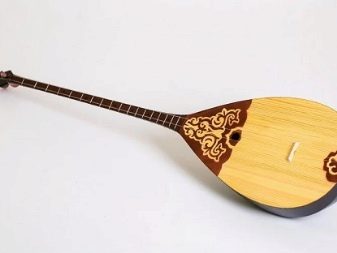

The famous composer K. Kurmangazy had a great influence on the development of the musical culture of Central Asia. About 60 melodies and compositions written by him have survived to this day. By the beginning of the 20th century, dumbira practically ceased to be used in everyday life. The reason for this, perhaps, was the persecution of the narrators by the tsarist authorities. Since these people were inspirers and active participants in the liberation movement, they were persecuted with particular cruelty. Over time, the tradition of performing epic legends began to disappear, moreover, the mandolin gained particular popularity. The reconstruction of the Bashkir dombra began at the end of the 19th century. The restoration and updating of the instrument was carried out by professionals. These were famous masters: V. Zubchenko, G. Kubagushev, Yu. Zirin, A. Paraev and A. Ovchinnikov.
G. Kubagushev came up with his own version, which resembled the Kazakh dombra - the viola. The famous musician R. Suleimanov wrote a tutorial for playing on the model of G. Kubagushev in the Bashkir language. Composer N. Tlendiev wrote about 500 different pieces of music with the participation of dombra, including opera and ballet. Dombrist K. Akhmedyarov is the author of many books and teaching aids for higher schools. At the same time, the department of "Bashkir music and folklore" was opened in the Ufa State Institute of History and a production workshop was organized for the manufacture of the Bashkir dumbyra and kubyz.
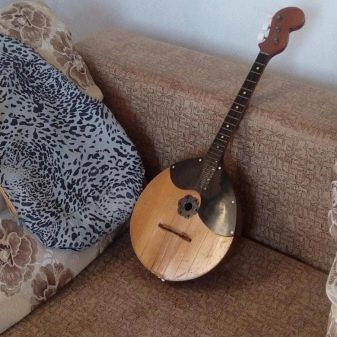
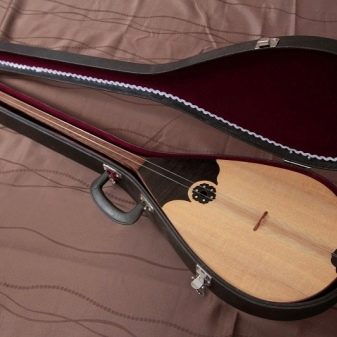
It is noteworthy that the modified tool began to be glued along the body, while the old one was made of chiselled wood. The new model of the musical instrument by Y. Zirin was tested in the educational ensemble of Bashkir musical instruments at the university. Dumbyra A. Ovchinnikova gained popularity among musicians. It was played in such folklore groups as "Caravan - Saray", "Dervish", and in the Academic Folk Dance Ensemble named after "F. Gaskarov ". Composer A. Zheldibaev can be noted among contemporary dombra players. He is the author of over 70 dombra melodies.
A. Vladimirov's instrument model delighted professional musicians. The mass production of dumbyra for professionals and amateurs was successfully organized.
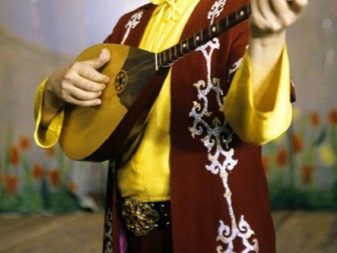
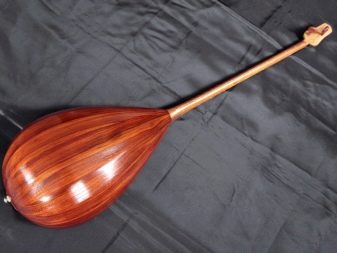
Structure
Kazakh dombra and dumbra are slightly different in appearance. The Bashkir dombra has a shorter neck, there are three strings, while the Kazakh dombra has only two of them. Dumbyra has a teardrop shape, the lower part of which is wider, and the upper one is narrower. When upside down, it looks like a large wooden spoon. Length - up to 80 cm. The instrument has a wooden body and three strings (nylon or metal).
Dumbyra has a 19-fret neck with plates. The quinto scale is a quart. The lower part of the deck consists of curved rivets, and the upper part is provided with a hole. The strings of the upper part of the instrument are attached to the tuning head, and the lower part is connected to the bit using buttons. You need to play the dumbyr simultaneously on three strings, placing the instrument at an angle, with the neck of the neck up. The top string of the instrument is the leading string, and the bottom string is the drone string. Dumbira can be both a solo instrument and participate in an ensemble.
